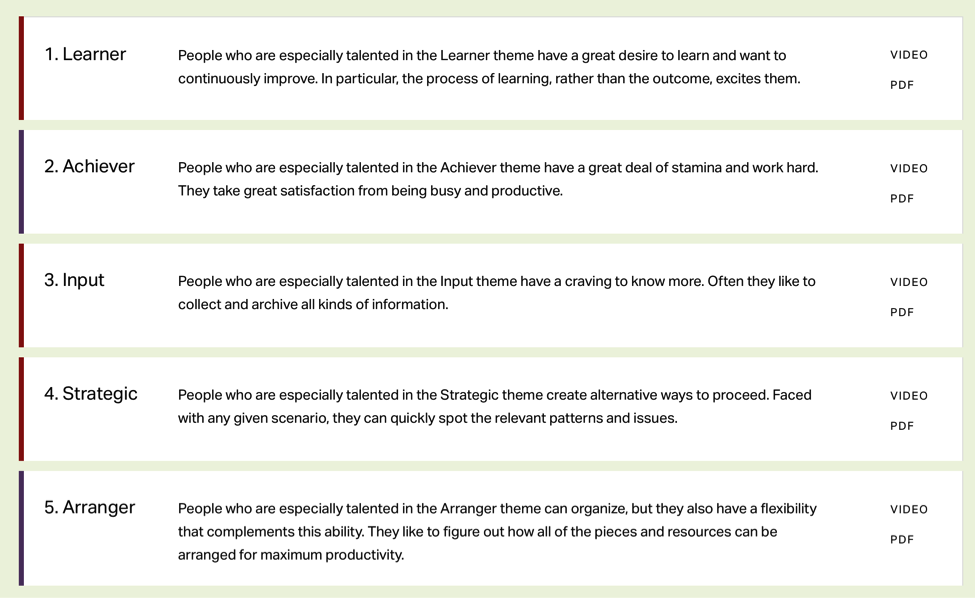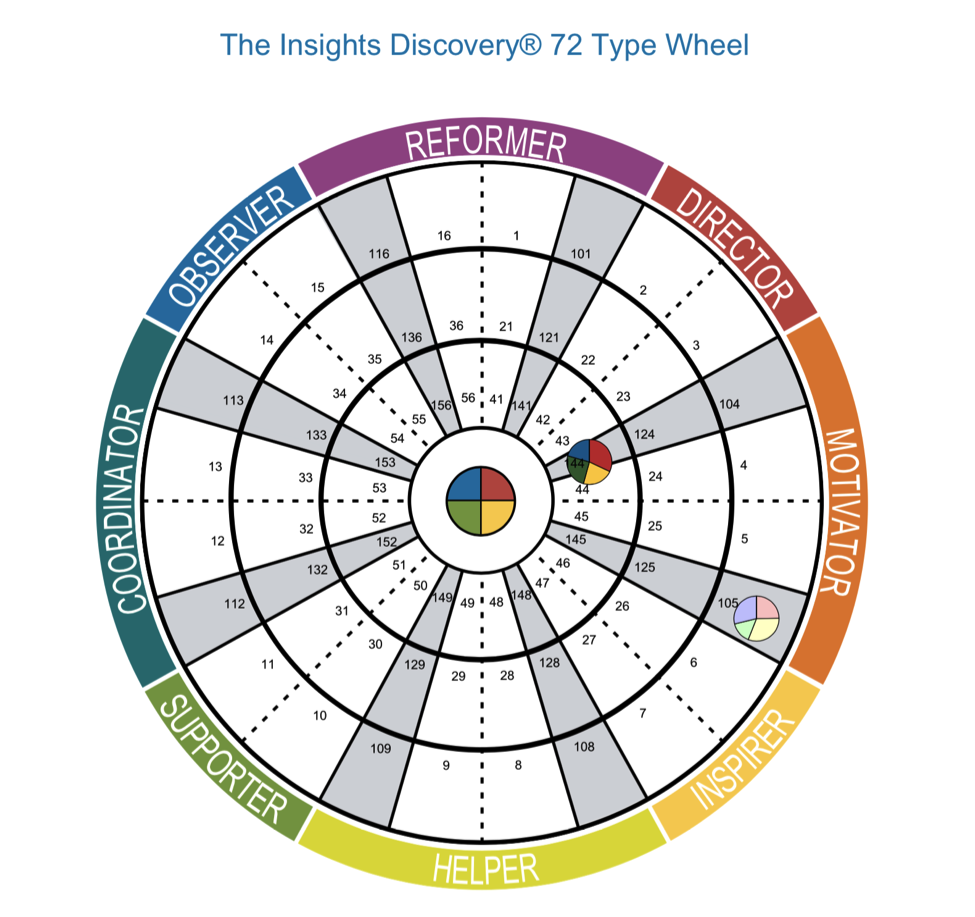Analyzing Personality Types in Your Firm
Share this
Personality testing has incredibly useful implications in the workplace—in hiring, interviewing, building work relationships, and understanding how your colleagues think, how they make decisions, what drives them, and how they interact with the world.
As a financial advisor, you likely have an intimate view of many of your clients’ lives. Personality testing can give you additional insight into your clients’ spending habits, priorities, and world views, painting a more holistic picture of each of your clients. This, in turn, can help you more appropriately frame your advice and better connect with your clients.
If you plan on hiring staff, you can use personality testing as a tool in the hiring process, and, once you’ve onboarded new employees, as a tool to help you better understand how to most effectively manage new staff.
I’m a big believer in situational management. Adapting your management style to different personalities not only results in better performance outcomes, it also makes employees feel heard and understood at work.
At XY Planning Network (XYPN), we use several different personality and work style tests during the hiring process. This is recommended as a final step in the hiring process once you’ve narrowed down your applicant pool to a few select candidates you think would perform well in the position.
Personality tests are an extremely useful way of determining not only whether an applicant will perform well given the tasks the job demands, but also whether the candidate is likely to be a good fit within the team they’ll be joining.
Once a candidate is hired, you can share any personality inventory results with other members of your organization so they have immediate insight into how best to work with the new hire.
Clifton Strengths Assessment
When I applied at XYPN, I was asked to complete the Clifton Strengths Assessment, a test that ranks 34 individual talents, describes how to leverage your natural strengths, and explains how your top strengths interact with one another. Below, you can see a snapshot of my top five results.

© Copyright Gallup StrengthsFinder
After you take the assessment, you receive a ranked list of the 34 strengths, along with a detailed description of the traits associated with each strength. This description also explains how you can harness your dominant strengths to their full potential and provides work-around tips for your less dominant traits.
For example, one of the very last strengths on my list is “Context.” As described by my results, those for whom this trait ranks high are “people exceptionally talented in the context theme enjoy thinking about the past. They understand the present by researching its history.”
Before taking this test, I could have told you this was not a strength of mine. I am much more future-focused and tend to avoid thinking about the past. I love planning, and can sometimes overlook historical patterns and information if I’m not careful.
Fortunately, the assessment provides some extremely relevant advice for those who, like me, don’t have context as a top strength:
“Among your top themes, find those that help you explore and better understand the situations and topics you face. Learner, Analytical, and Communication talents my help you seek a historical perspective in the same way Context talents do for others.”
As someone who is a strong learner, I know I can use my natural sense of curiosity as a stand-in for gaining perspective when I may not naturally have a strong sense of historical events. I love research and investigating, so when my memory doesn’t serve me well in seeing historical patterns, I can rely on my natural curiosity to dig deeper into the past.
This information is not only helpful for my own introspection, it helps others on Team XYPN understand my natural work style, what I find challenging, and where I am likely to succeed.
Overall, the test analyzes four different domains: strategic thinking, executing, influencing, and relationship building. I highly recommend this both for your own insight into how you can better leverage your specific strengths in building your firm and also for analyzing the strengths of your staff.
Insights Discovery Inventory
Once I began working for XYPN, the team and I worked through the Insights Discovery Inventory, an extremely thorough assessment that generates a 22-page individualized report. The Insights system, based on Jung’s “Psychological Types” model, offers an overall reflection on individual personality as well as specific suggestions for improving interactions and becoming more aware of potential blind spots.
The Insights Profile covers:
- Personality style overview
- Patterns in interacting with others
- Decision-making
- Strengths and weaknesses
- What value the individual brings to the team
- Communication style
- Strategies for effective communication
- Barriers to effective communication
- Tips for interacting with your opposite type
- Suggestions for development
- Your ideal work environment and how to create it
- Personality-specific management and motivation strategies.
When taking this assessment as a team, you also receive a map showing where each team member falls in relation to others in the organization. As you can see below, in addition to the detailed report, this wheel also identifies each team member by a specific color and associated trait.

This assessment also indicates personality traits that are more and less conscious. In other words, it describes both how you see yourself/your external persona and also who you are more instinctively/intuitively. This can be valuable in understanding the (sometimes subtle) differences between who we are at work/who we are when we know we are being evaluated, and our natural preferences and energies.
Your profile also shows what traits you consciously bring forward at work to adapt and succeed. Larger differences between conscious and unconscious personas can indicate high levels of stress, so it’s important to keep an eye on this factor in yourself and your employees to determine whether any workplace adjustments need to be made. If this discrepancy occurs, maybe you or a staff member is taking on a role that isn’t 100% appropriate.
If you notice this happening, try to determine the source of the mismatch and adjust as needed. Maybe you’re taking on too much administrative work and it’s not your strong suit, in which case you could consider hiring a part-time admin. Maybe you’re scheduling too many client meetings during the week and need some additional “think time,” in which case you should adjust your schedule accordingly. Use this information to adjust your work life more towards your natural inclinations.
In addition to the detailed Insights Profile each team member receives, all employees are also provided with a ranking of four “Color Energies.” Everyone has a different preference for each of these four energies, and demonstrates each of them in different amounts depending on the specific situation:
Fiery Red Energy: “Positive, Affirmative, Bold, Assertive Competitive, Decisive, Strong-willed, Demanding and Task/Goal-focused”
Sunshine Yellow Energy: “Social, Dynamic, Demonstrative, Expressive and Creative”
Cool Blue Energy: “Showing no bias, Objective, Detached Cautious, Analytical, Precise, Questioning and Formal”
Earth Green Energy: “Still, Tranquil, Calming, Soothing Sharing, Patient, Amiable, Caring and Encouraging”
Everyone is described as tending to “lead with” one color over the others, which indicates how an individual naturally works and interacts with others. While the four-color personality breakdown isn’t as nuanced as the more detailed profiles, for us at XYPN, it has become a helpful shorthand for describing how others operate and interact and also for requesting certain modes of execution.
For example, if I’m crunched for time and need a quick, decisive meeting with my team, I might request “red energy” from everyone. While others might generally prefer to lead with another color energy, everyone has the ability to be focused and decisive at times, and this is an clear way to get everyone in the same mindset while we execute an important task.
Or maybe I feel stuck and need a quick pep talk. You can be sure that I’m going to dial XYPN’s business coach, Arlene Moss, who leads with extroverted, positive, expressive yellow. I know her natural style is just right when I need some caring advice or optimism in my day.
Everyone at XYPN now has a common language for describing these work and communication styles, which has improved understanding across the company.
Myers-Briggs Type Indicator
Another personality test that I’ve found quite helpful in understanding workplace relationships is the Myers-Briggs Type Indicator. This assessment is based on 16 types that are determined by four factors:
- Where you place your focus (inner world or outer world)
- How you interpret information
- How you make decisions
- How you structure your life
Each of these preferences is assigned a letter that represents your preference as follows:
Introvert (I) vs. Extrovert (E)
Most of us are familiar with the general distinctions between extroverts and introverts, but there are some common misunderstandings about each of these types. A good way to think about the difference between extroversion and introversion is to consider where you derive your energy.
Which activities make you feel excited and alive, and which make you feel drained? Remember that even extroverts need alone time sometimes to recharge, and that introverts can be outgoing and social. The distinction is in how people process these events and interactions.
An introvert and extrovert may both enjoy attending a party and meeting a lot of new people, but the next evening, the introvert may need a quiet night alone, while the extrovert may be immediately ready for another social event.
Keep your introversion/extroversion preferences in mind when making decisions related to your firm. If you’re introverted, you may need to schedule a little extra down time on days when you have a lot of client appointments. While you may still love one-on-one meetings with clients, remember that your self-care may involve ensuring some time for activities like writing or paperwork to balance out client-facing time.
If you’re more extroverted, you may want to build social types of marketing, like networking events and speaking engagements, into your business plan. You’re likely to have more energy and a stronger desire for these types of activities than an introverted planner.
Sensing (S) vs. Intuition (N )
This pair has to do with how you process information. Those with the sensing preference report that they pay more attention to physical reality, tangible sensory information, facts, details and data. Sensing in this context relates to being practical and pragmatic, and focusing less on possibilities.
Alternatively, those who prefer intuition focus more on abstractions, enjoy big picture thinking, and considering what is possible. If you tend to be more intuitive, you’re typically more comfortable with the unknown, gaps in information, and metaphorical thinking than those with a preference for sensing.
In working with clients, you may have a sense of your preference for either sensing or intuition. Maybe you’re drawn to financial planning because you love the associated data, facts and figures (sensing preference). Or maybe the appeal is more related to the fact that you’re helping your clients plan for the future and all the possibilities it holds (intuition preference).
Thinking (T) vs. Feeling (F)
The thinking/feeling pair relates to how you tend to make decisions. Those who rely predominantly on feeling spend more time considering the people involved in any given decision, and will likely make decisions that promote relationships. Thinking types are more likely to consider the facts involved, spend time analyzing pros and cons, and make decisions based on logic.
Consider how preferences for thinking or feeling affect your client relationships. It’s a good idea to think about this from the client perspective. Is your client making financial decisions based on how they will affect relationships? Are they considering how it will feel to be able to send their kids to a good college? Or is your client more focused on using a logical, analytical approach?
Understanding this distinction can help you frame financial planning in a way that is most compelling for each individual client.
Judging (J) vs. Perceiving (P)
This distinction is often evident in how people like to make plans (or, in the case of those who lean towards perceiving, how people prefer not to make plans). Generally those with a preference for judging prefer planned, structured events. These are the goal-oriented list makers. Those who prefer the perceiving style enjoy leaving things more open-ended and flexible. Perceivers tend to gather information for much longer before making a decision, and are generally more comfortable before a decision is made rather than after.
If I had to guess, I’d lean towards more financial planners preferring a judging style than perceiving. That being said, you’re likely to end up with plenty of clients who are perceivers—those who would rather be spontaneous and open-ended. Consider that these clients may need the most help in the planning process. You may want to spend additional time explaining the value of financial planning and may need to have more patience with them, given these clients tend to resist the idea of planning at all. These are the clients who will be more motivated by immediate deadlines than long-range planning, so be sure to set short-term goals and build in plenty of success measures.
|
Your World |
E: Social, outgoing, people-oriented, outer world, large groups |
I: Reflective, reserved, idea-oriented, alone time, inner world, smaller groups |
|
Receiving Information |
S: Five senses, facts, physical reality, details, practicality |
N: Impressions, meaning, possibilities, big picture, metaphors |
|
Making Decisions |
T: Pros and cons, consistency, logic, task-orientation |
F: Communication, warmth and concern, harmony, people-orientation |
|
Your Lifestyle |
J: Decisions, Task-orientation, lists and plans, deadlines, goals |
P: Flexibility, spontaneity, openness, casual approach, information gathering |
While you may not actually run clients or staff through all these personality tests, by identifying general personality traits and understanding their implications, you can build stronger relationships with your clients and staff. Understanding what drives your clients’ decision-making and how they interpret information will help you better serve your clients, increase your chances of ensuring client success, and likely increase referrals, too.
If you have staff, taking the time to identify the preferences of your employees can help you build a more successful team for your firm.
And last, but certainly not least, understanding patterns in your own behavior and personality can give you invaluable insight into your own motivations and perceptions, strengths, and weaknesses.

About the Author
Kate Ross has spent the last ten years of her career developing educational materials for financial professionals and brings a passion for instructional design and curriculum development to the XYPN team.
In her free time, Kate can be found front row at a concert, camping in the woods, floating a river, or hiking in the mountains near her home in Montana.
Share this
- Advisor Blog (721)
- Financial Advisors (244)
- Growing an RIA (128)
- Business Development (95)
- Digital Marketing (95)
- Marketing (92)
- Community (82)
- Start an RIA (76)
- Coaching (74)
- Running an RIA (72)
- Compliance (70)
- Client Acquisition (68)
- Technology (67)
- Entrepreneurship (64)
- XYPN LIVE (64)
- Fee-only advisor (49)
- Sales (49)
- Bookkeeping (46)
- Client Engagement (45)
- Practice Management (44)
- XYPN Books (43)
- Scaling an RIA (42)
- Investment Management (41)
- Client Services (31)
- Employee Engagement (31)
- Financial Education & Resources (31)
- Lifestyle, Family, & Personal Finance (31)
- Market Trends (26)
- Journey Makers (24)
- Process (18)
- Niche (13)
- SEO (9)
- Career Change (8)
- Partnership (8)
- Transitioning Your Business (7)
- Sapphire (6)
- Persona (4)
- Transitioning To Fee-Only (4)
- Emerald (3)
- Social Media (3)
- Transitioning Clients (3)
- RIA (2)
- Onboarding (1)
Subscribe by email
You May Also Like
These Related Stories

Using Personality Tests to Create Stronger Teams: What Would Arlene Say?
Aug 16, 2018
14 min read
.png?width=360&height=188&name=WWAS%20(24).png)
Building Your Dream Team: A Pick-and-Choose Roster - What Would Arlene Say?
Feb 22, 2018
5 min read




.png?width=600&height=400&name=PW%20%20Insider%20Insights%20YT%20Thumbnail%20Image%201920%20%C3%97%201080%20px%20(1).png)